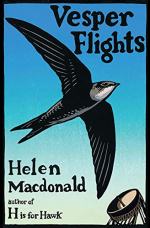
|
| Name: _________________________ | Period: ___________________ |
This test consists of 15 multiple choice questions and 5 short answer questions.
Multiple Choice Questions
1. How long did George Waterston sit with his colleagues by the first Scottish osprey nest and keep it under observation through the telescopic sights of rifles?
(a) 50 years.
(b) 20 years.
(c) 5 years.
(d) 30 years.
2. When was Florence Merriam's Birds Through an Opera-Glass published?
(a) 1893.
(b) 1889.
(c) 1891.
(d) 1887.
3. What was a chaffinch nest made from that the author collected in "Nests"?
(a) Straw, soft twigs, and clay.
(b) Leaves, straw, and grass clippings.
(c) Horsehair, moss, lichen, and pigeon feathers.
(d) Threads, hair, and feathers.
4. When did the author work at a falcon-breeding center in Wales?
(a) 1980s.
(b) 1995.
(c) 1985.
(d) 1990s.
5. At the beginning of "Field Guides," where was the author observing birds?
(a) Canada.
(b) United States.
(c) Australia.
(d) New Zealand.
6. In "Nothing Like a Pig," what season was it?
(a) Autumn.
(b) Summer.
(c) Winter.
(d) Spring.
7. When did Samuel Tyalor Coleridge write of a murmuration?
(a) 1787.
(b) 1793.
(c) 1799.
(d) 1785.
8. In "Ants," what was feeding on flying ants?
(a) Bluebirds.
(b) Herring gulls.
(c) Barn swallows.
(d) Nuthatches.
9. When were the Cabinet of Curiosities a craze in Europe?
(a) 14th century.
(b) 16th century.
(c) 17th centry.
(d) 15th century.
10. When were boars introducted to New Hampshire?
(a) 1870s.
(b) 1880s.
(c) 1890s.
(d) 1860s.
11. How many years did it take the author to understand her premenstrual pattern?
(a) 36.
(b) Nearly 30.
(c) About 15.
(d) 24.
12. How long might a queen of a common black ant live?
(a) 10 years.
(b) 5 years.
(c) 20 years.
(d) 30 years.
13. When Macdonald watched birds migrating with Farnsworth in "High-Rise," about how many birds were there per cubic mile?
(a) 890.
(b) 760.
(c) 1,000 to 2,000.
(d) 500 to 900.
14. How many times has the authoir had visual disturbances with her migraines?
(a) 1.
(b) 4.
(c) 3.
(d) 2.
15. When did Macdonald and her parents leave Tekels Park?
(a) 1984.
(b) 1990s.
(c) 1980s.
(d) 1991.
Short Answer Questions
1. How large was the meadow at Tekels Park?
2. At what UV level did the World Health Organization warn against being outside?
3. How does the author describe the color of chanterelles in "Sex, Death, Mushrooms"?
4. When was Cabrol the chief scientist on a team testing an experimental rover in the Atacama Desert?
5. What does a boyfriend show Macdonald in the woods in "Nothing Like a Pig"?
|
This section contains 323 words (approx. 2 pages at 300 words per page) |

|




